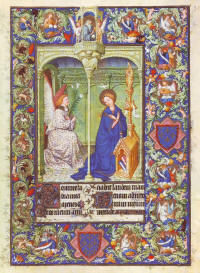Flight to Egypt
The Flight into Egypt, Duc de Berry paintings
Painting of the journey to Egypt
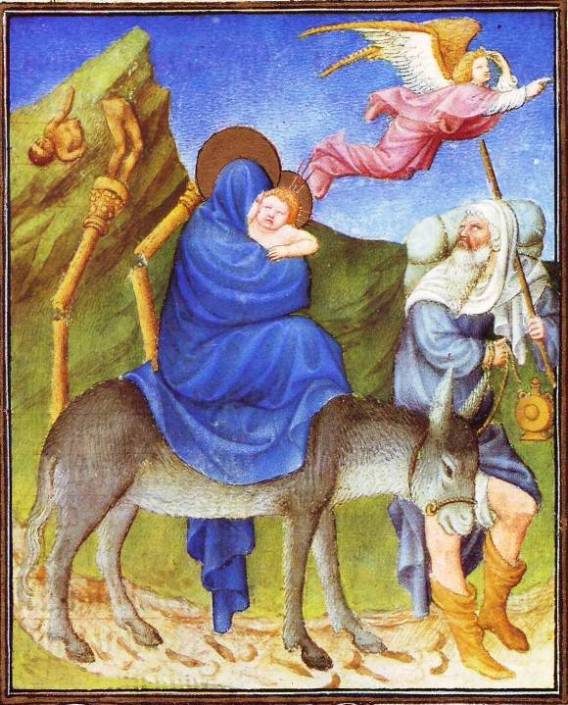
Warned by Joseph’s dream that King Herod was preparing to kill the Christ Child the Holy Family fled to Egypt.
The painter of the Duc de Berry’s Book of Hours wanted to make this episode the basis for a new sort of depiction of the Holy Family. He seems to have admired the fresco of the Flight in the Arena Chapel, which he might recently have seen. He himself was seeking greater movement and luminosity, not to mention a more intimate view of the world.
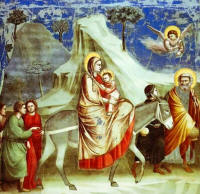 Notice how he showed the prints of hoofs and feet in the dust of the road. This was an innovation, and typical of a Northern artist. Notice too the averted face of Mary in the Book of Hours painting, something else that was new. It allowed the artist to show mother and son close, but also to give special prominence to the child.
Notice how he showed the prints of hoofs and feet in the dust of the road. This was an innovation, and typical of a Northern artist. Notice too the averted face of Mary in the Book of Hours painting, something else that was new. It allowed the artist to show mother and son close, but also to give special prominence to the child.
It suggested to him also the possibility of a corresponding rotation of Joseph. The two turning figures are so powerful in their interrelated movement that they bring to mind later contraposto in the work of Donatello or Quercia.
The donkey appears especially quiet and meek. His soft hair is lighted, it seems, chiefly by reflection from the road. The Virgin is a broad, heavy figure, and the artist, feeling she needed more support than the little grey ass could give her, extended her mantle below it to serve as a vertical buttress. Notice the shattered pagan idols behind Mary. The mere passing of the Holy Family has caused these figures to collapse and fall.
This painting of the Flight has a masterful simplicity and harmonious colors of tan, gold, pale green, violet, and blue.



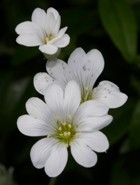
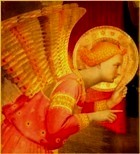
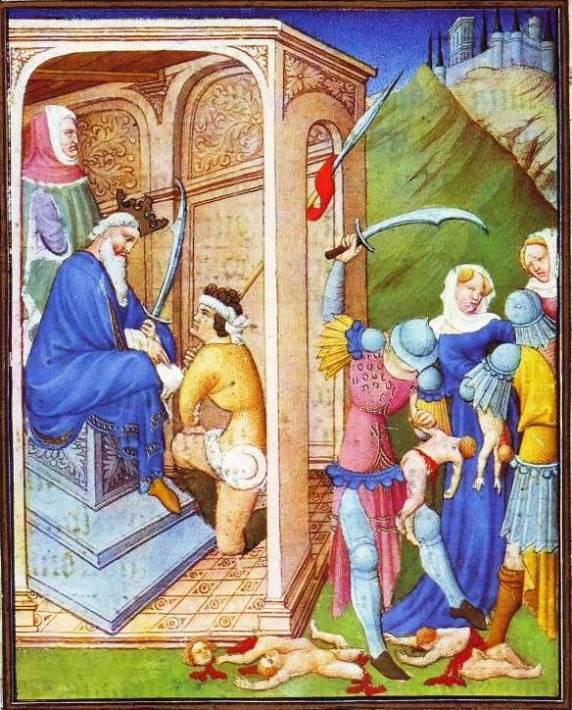
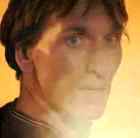
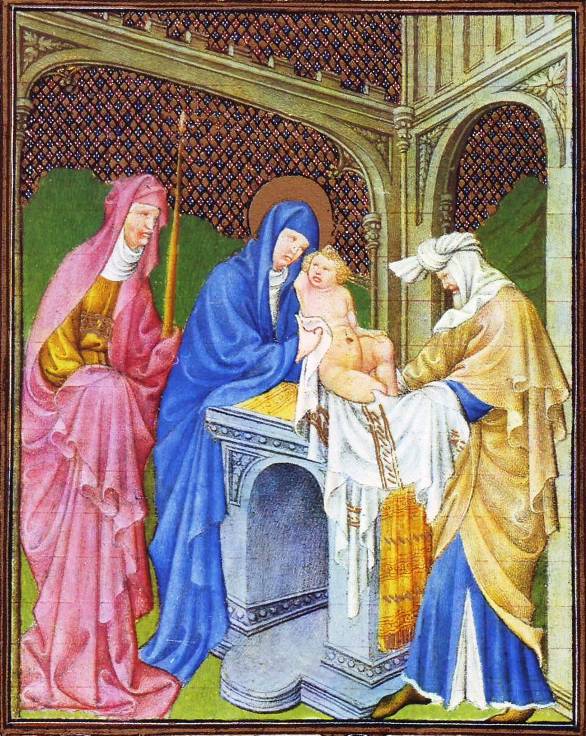
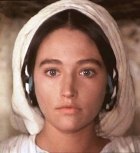
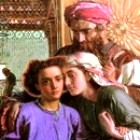
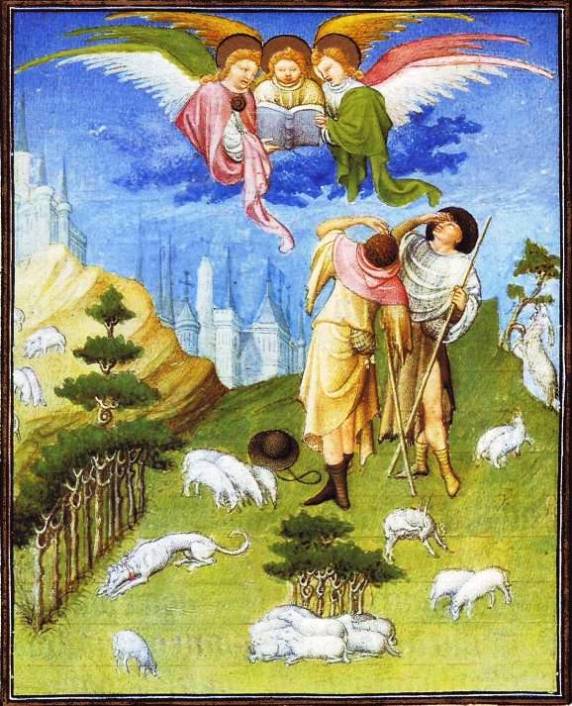
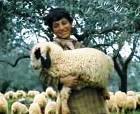
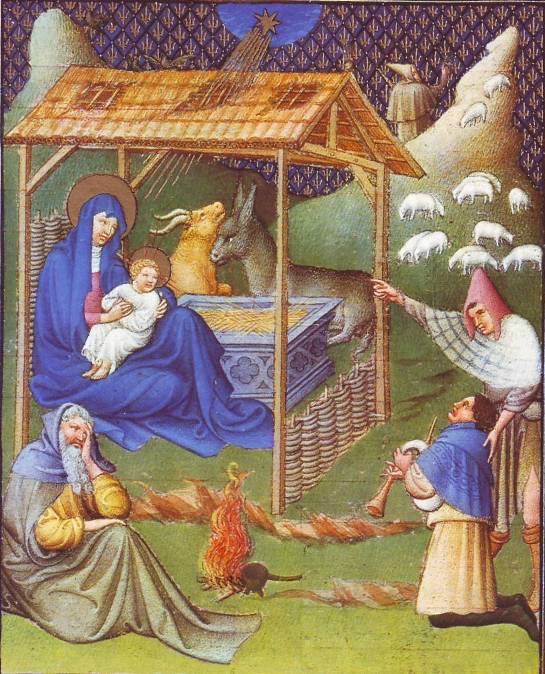
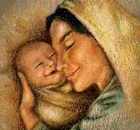
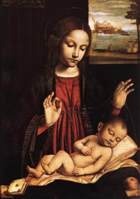
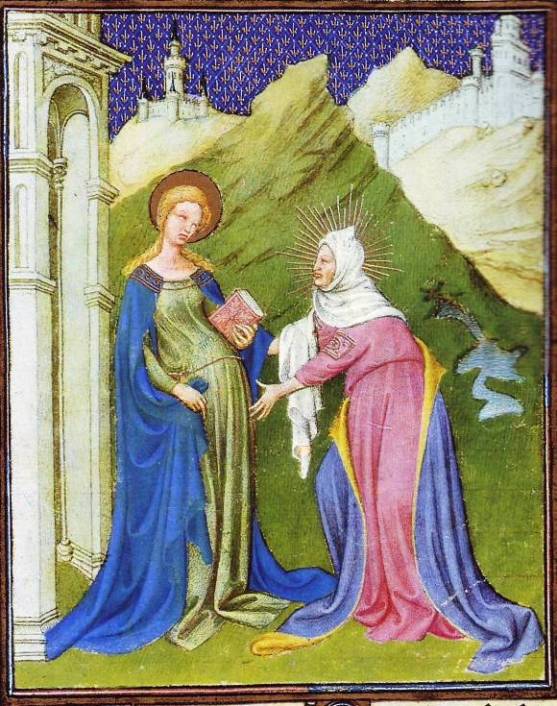
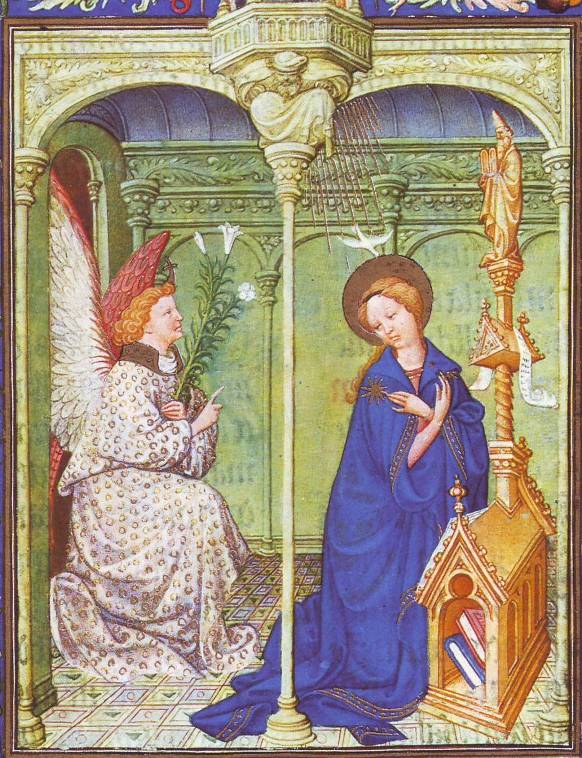
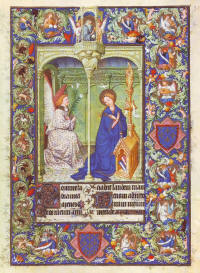 The angel looks up and points to the dove descending in a shower of golden rays – the Holy Spirit, of course. The kneeling Virgin does not look directly at the angel, but casts her eyes down modestly. With equal humility she crosses her hands on her breast, as in Italian paintings of the period. The stars on her cloak suggest that she is already part of the universal plan of God, as the stars are.
The angel looks up and points to the dove descending in a shower of golden rays – the Holy Spirit, of course. The kneeling Virgin does not look directly at the angel, but casts her eyes down modestly. With equal humility she crosses her hands on her breast, as in Italian paintings of the period. The stars on her cloak suggest that she is already part of the universal plan of God, as the stars are.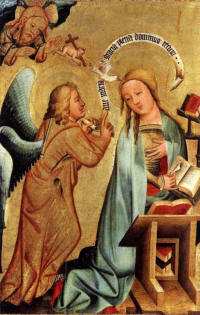 A book lies open on the lectern, and there are two more volumes below. Earlier French representations of the Annunciation show a single book; the open cupboard containing books beneath the lectern appeared earlier only in the Hannover altarpiece by Meister Bertram of Hamburg.
A book lies open on the lectern, and there are two more volumes below. Earlier French representations of the Annunciation show a single book; the open cupboard containing books beneath the lectern appeared earlier only in the Hannover altarpiece by Meister Bertram of Hamburg.